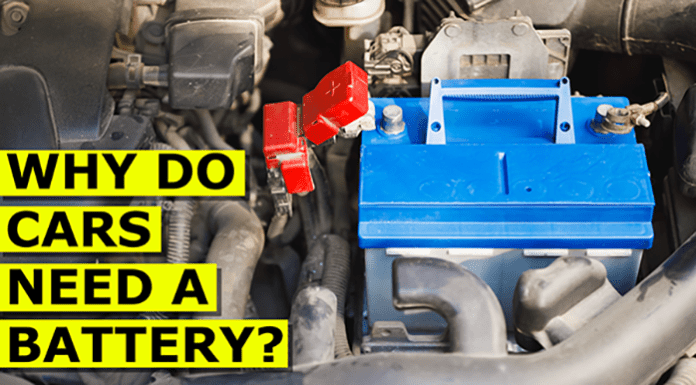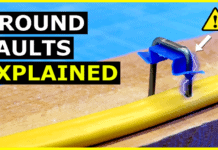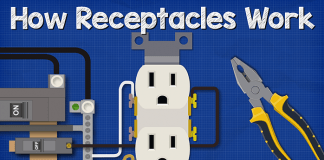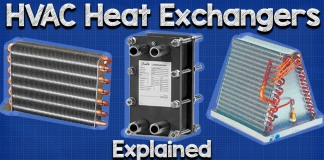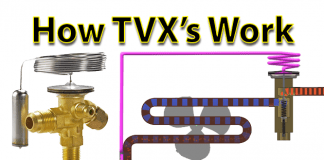In this article, we’ll answer the question: why do cars need a battery? We’ll explain the basics of car batteries, and talk about the importance of having a battery in a car.
Scroll to the bottom to watch the YouTube tutorial.
The typical car battery is found in the engine bay of the car. The battery is first used to start the engine and it does this by providing electricity to a small electrical motor known as the starter motor.
The starter motor engages a small gear onto the flywheel of the engine. It turns this to turn the crankshaft which starts the combustion engine. The small gear then disengages and the engine runs by itself. The starter motor needs to provide a huge amount of force to be able to turn the flywheel so the starter motor will draw an extremely large current, possibly hundreds of amps but this only for a few seconds. This large current demand is going to reduce the energy storage of the battery so we will need to top this back up.
Connected to the engine is an alternator. The alternator is rotated by the engine and as it rotates it also generates electricity. This electricity is fed back into the battery to recharge it.
While the engine is running the alternator recharges the battery but it also provides the electrical power for things such as lighting and the music system.
When the demand for electricity in the car exceeds what the alternator can provide then the battery will provide this additional power which again drains the battery.
If the engine is switched off, the alternator stops rotating and recharging the battery. So the battery will provide the full electrical power to the car until its dead. At this point the battery cant provide enough electricity to start the engine so we will need to jump start the car.
The 12V car battery looks something like this. This is a lead acid battery. We call it a lead acid battery because inside the unit are lead plates which are submerged into an acid. This creates a chemical reaction which releases energy and provides us with a voltage and current. The battery is therefore storing energy in the form of chemical energy. It does not store electricity.
This chemical is converted into electrical energy whenever we need it. This battery is also rechargeable. If we supply the battery with electricity then we can reverse the chemical reaction and recharge the battery.
These types of batteries provide large amounts of current especially compared to the typical smaller household alkaline batteries.
We have covered how alkaline batteries work in our previous article, check that out HERE.

